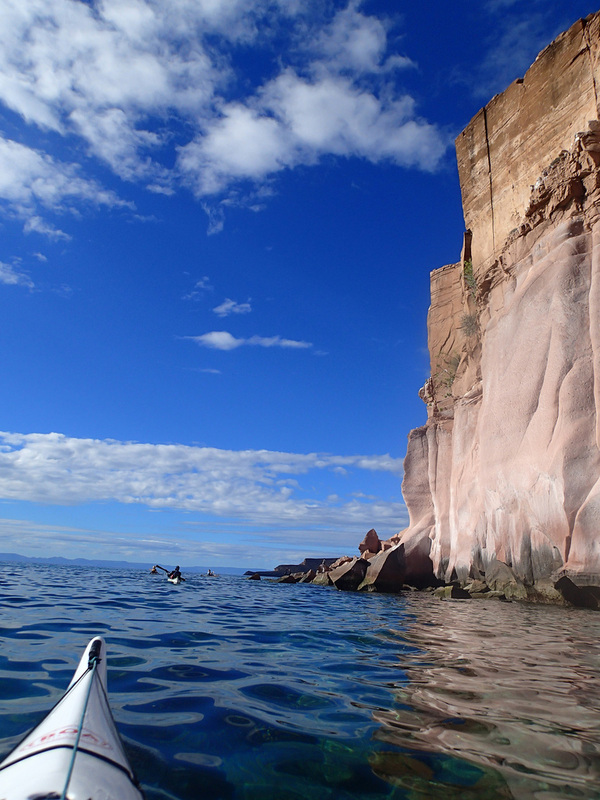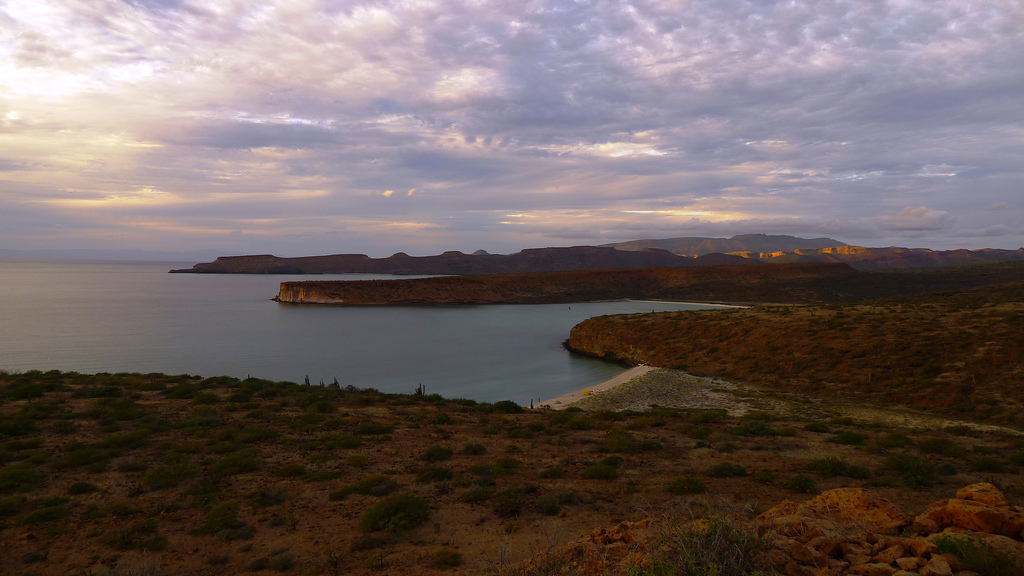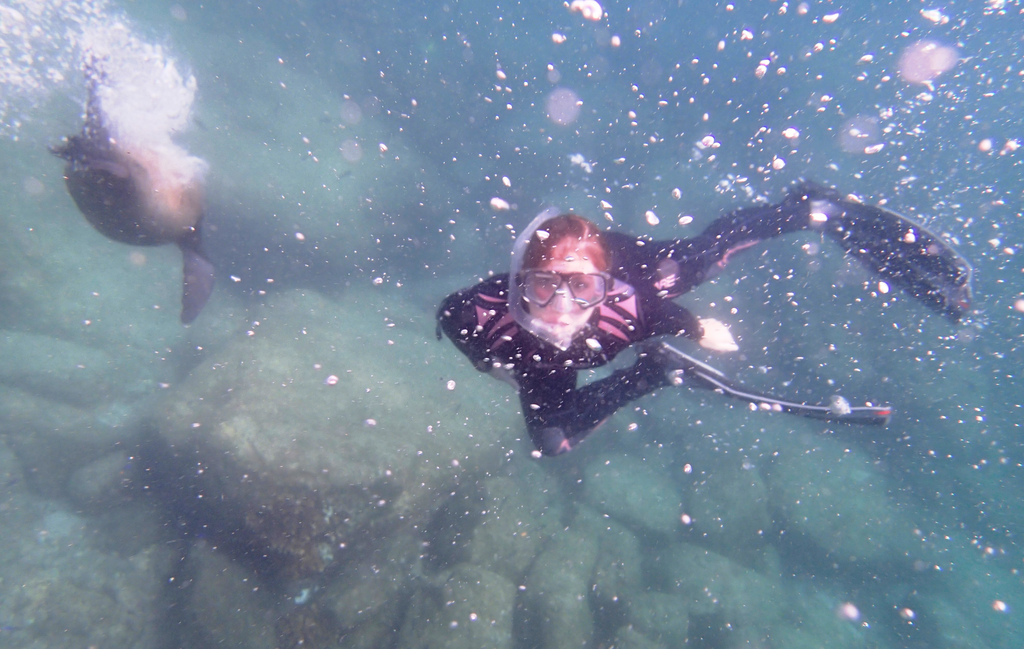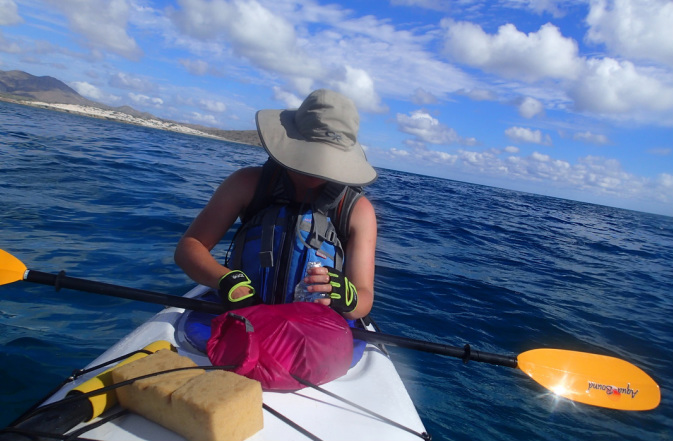Erin Clark found herself in La Paz, Baja California for a month because the Montana-based environmental education non-profit she for which she manages programs has it’s second largest office there (www.ecologyproject.org). She heeded her boss’s admonishments to stop being all work and no play, and kayaked for a week four miles off the coast at Espiritu Santo Island. Erin’s research chops include a Masters in forest science and she loved participating in the ASC microplastics study. This was her first multi-day kayaking expedition.
Two days of twenty plus knot winds have turned our Espiritu Santo and Isla Partida circumnavigations into an Espiritu Santo only adventure. It’s unfortunate, but hasn’t hampered spirits too much. How could it when you’re camping on a two-mile long white sand beach and spending the afternoon snorkeling and hand lining? It’s our last day of paddling and I need to take a water sample today while we’re here on the far side of the island, our maximum distance into the of the Sea of Cortez. Since there’s been little or no garbage on any of the four beaches we’ve camped I’m hoping there is little to no presence of microplastics, the alarming form of pollution this study is measuring, in my sample. But I’m curious to find out what the water sample divulges.
My partner consents to stopping so that I can gather the sample. I’m juggling turning the GPS on through my camera’s menu and keeping track of my paddle when I hear someone in our group gleefully shout, “Dolphins coming right your way!” I look up and twenty feet in front of our boat there is a sleek dorsal fin slicing the water. The fin disappears and I look beneath the kayak in an attempt to see it pass below. It dove deep, though, and I can’t distinguish it that far down. I take its passing visitation as encouragement that now is the time to take this sample, as if it’s been blessed by one of the Sea of Cortez’s magnificent marine mammals. GPS coordinates are now recorded, the bottle has been rinsed the requisite three times, and now is refilling slowly. I press aluminum into the bottle’s cap to avoid plastic contamination and screw it tightly onto the bottle once bubbles have stopped rising.
When I hold it up to the sun I can’t detect anything within the bottle other than water and air bubbles, but I suspect that even here — where I’ve swam with seven enormous whale sharks, snorkeled past many sea stars twice the size of my hand, and played with a rowdy bunch of sea lion pups — there is more in the water than meets the eye.
When I return to the port city of La Paz, I drench my sneakers early one morning connecting another sample in front of my favorite ice cream spot on the Malecon, La Paz’s boardwalk. It’ll provide a comparison point for the other sample taken near the island. Both bottles go into my luggage and then into the post from Montana to Maine. Mexico, Montana, Maine. Marine microplastics. These two one liter bottles have turned a vacation excursion into something more resembling a purposeful mission, and I’m thankful for the added significance.
Keep up with ASC by subscribing to ASC’s blog, liking us on Facebook and following us on Twitter (@AdventurScience), Instagram (@AdventureScience) and Google+.




